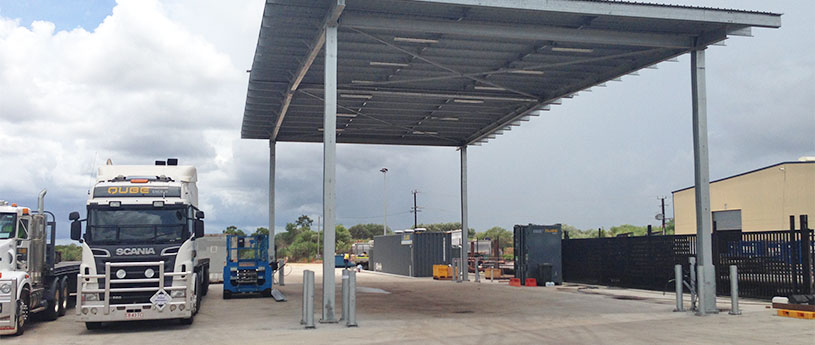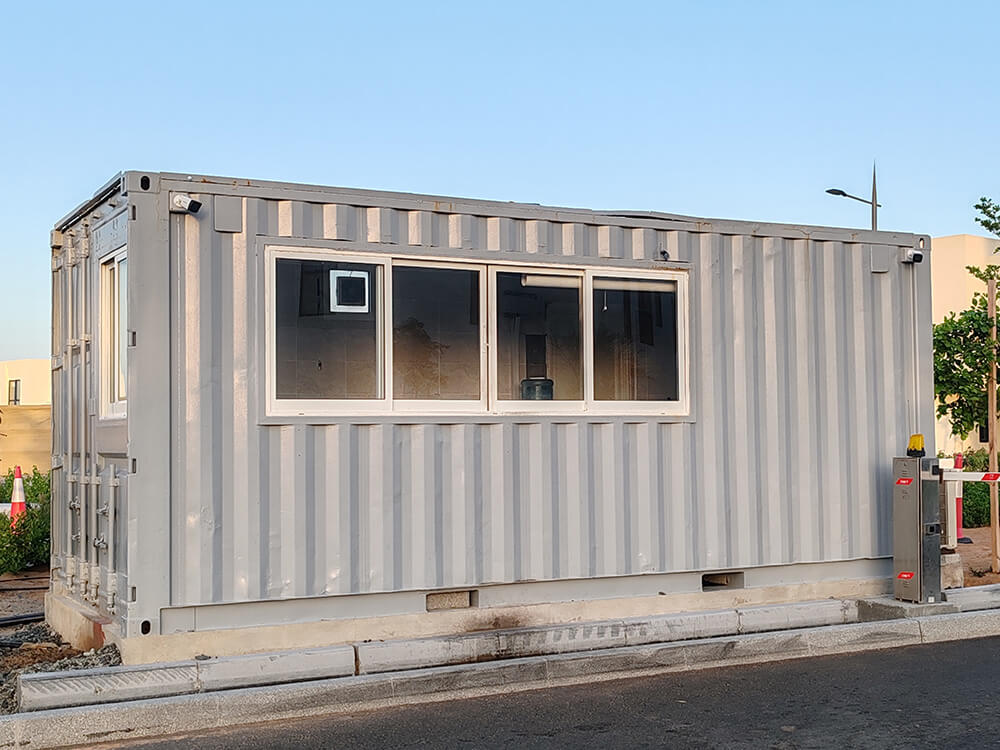Recycle water and save money for your wash bay
Wash bays are required for washing down parts, vehicles, containers and other items. This prevents pollutants and disease-causing bacteria from being discharged into the stormwater system and the environment.

There are plenty of wash bay designs out there, from a simple temporary structure to a fully roofed permanent fixture. Simple forms of treatment include silt traps, while oil separators are more complex treatment processes to clean used wash bay water. However, all of them have the same basic functions and objectives:
-
Containing the wastewater from wash down activities
-
Treating wastewater to meet trade waste specifications before discharge
Wash bays can be utilised in many industries, from car cleaning to mining. To learn more about how wash bays work, watch the video below.
What are wash bay regulations?
The most highly regulated wash bays are those used to quarantine imported goods. To protect the delicate natural ecosystems of Australia, authorities set specific criteria for quarantine wash bays in terms of:
-
Minimum size
-
Water treatment processes
-
Disinfection
Due to the complexity of the regulations and the high costs to retrofit or install a new water treatment system, it is advisable to partner with an experienced supplier for industrial wash bays.
Wash Bay Recycling Systems
Recycling wash bay water is important for preserving sustainability and making the wash down process economical. Wash bays reduce costs by reducing liquid waste disposal, the amount of wastewater generated, and the supply of water needed.
For example, Western Australia's Department of Health has developed a guidance document for recycling wash bay water. Although it does not apply to other states or wash bay operators in terms of regulations, it provides some helpful tips for wash bay recycling systems.
Cleanawater can help you understand wash bay recycling compliance guidelines for the following:
Can I reuse wash down water?
Before implementing a wash down water recycling system, it is important to thoroughly plan the project and understand the best management practices for the wash bay. Here are some steps to follow when planning to use a wash bay:
-
Determine the capacity needed and composition of the flowing water.
-
Design the system including collection, storage, ongoing maintenance and treatment options, as well as liquid waste disposal. This should include what to do in the case of system failure to dispose of wash down water. The design should prevent stormwater runoff from entering the system to prevent overload.
-
Consult with local authorities and ensure that all regulatory permits and licenses are obtained.
-
Develop a plan for internal and external communication.
What are the Australian guidelines for water recycling?
Commissioning and testing a wastewater recycling system will ensure that it is operating as per design standards and meets all license conditions:
-
The system must be installed, inspected, and maintained in accordance with local government and manufacturer requirements.
-
The critical part of commissioning a wastewater recycling system is to analyse the water quality to check that it remains within the required limits.
-
Even with water recycling, soil and sludge must still be disposed of at a registered facility.

Risk management practices
Risk management practices ensure adequate precautions are taken and employees are always kept safe when using a wash bay water recycling system. They include:
-
The use of Personal Protective Equipment (PPE)
-
The implementation of on-site procedures and training
-
A program of regular updates to the site risk assessment
Is there a connection between water quality and recycled wash down water?
The West Australian guidance note gives specific water quality limits for the use of recycled wash down water. The following criteria must be monitored on a bi-annual basis, with records kept for five years:
-
E. coli levels
-
PH levels
-
Turbidity
-
Disinfection
-
Benzene, Toluene, Ethyl Benzene, Xylene (BTEX) levels

Special quarantine wash bay water recycling guidelines
Quarantine wash bays are heavily regulated across all states in Australia. Wash bay recycling compliance must be tightly controlled to ensure no foreign contaminants reach the Australian environment or augment drinking water supplies.
-
Access to a quarantine wash bay must be controlled.
-
Wash bays should be sized to facilitate the washing of a shipping container.
-
The surface of a wash bay in quarantine service must be impervious to liquids to prevent groundwater contamination through seepage.
-
Operating instructions should ensure that the wash bay is washed down at the end of each day.
-
All waste must be contained on-site, screened and treated before discharge. This will help prevent the distribution of significant suspended solids.
Keep your wash bay compliance up to scratch with Cleanawater
Cleanawater offers highly technical expertise, excellent quality equipment, and a personalised approach to your business needs. Our wash bays are Australian-made with designs appropriate to the harsh Australian climate, this includes permanent and portable wash bays.
We also offer services and maintenance support Australia-wide. We can easily combine our solutions to suit your specific business, wash bay recycling compliance needs, and investment requirements. For more information, contact us today.
Must Read
What to Expect During a Modular Wash Bay Installation
CleanaWater, we make the process of installing a modular wash bay on your site as smooth and straightforward as possible. ...
Read moreThe CleanaWater Team Driving Water Treatment and Sustainability
CleanaWater is powered by a dedicated team of professionals who bring expertise and passion to every project. ...
Read more